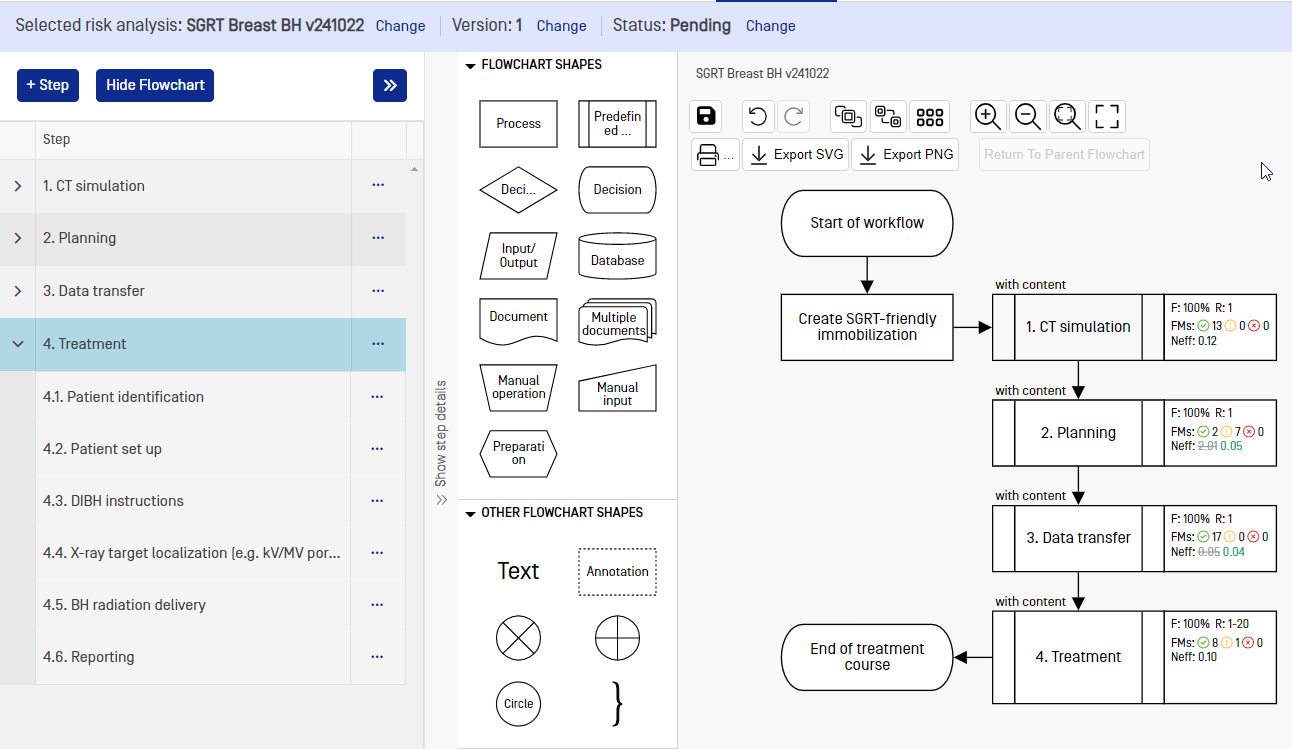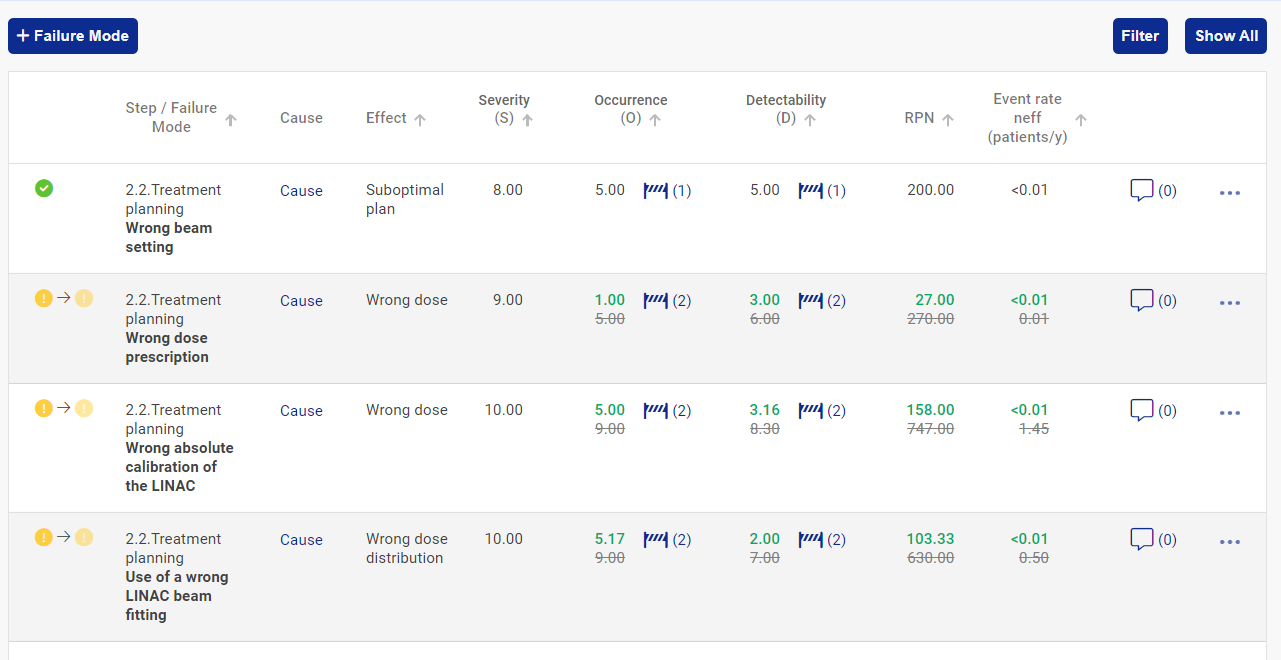FMEA risk analysis of surface-guided DIBH breast radiotherapy by using a commercial software tool
PO-1714
Abstract
FMEA risk analysis of surface-guided DIBH breast radiotherapy by using a commercial software tool
Authors: Serenella Russo1, Marco Esposito1, Andrea Bruschi1, Alessandro Ghirelli1, Paolo Alpi2, Fiammetta Meacci1, Camilla Delli Paoli2, Silvia Scoccianti2
1AUSL Toscana Centro, Medical Physics Unit, Florence, Italy; 2AUSL Toscana Centro, Radiotherapy Unit, Florence, Italy
Show Affiliations
Hide Affiliations
Purpose or Objective
To evaluate a new software tool for prospective risk analysis in DIBH surface-guided radiation therapy (SGRT) for left breast and to generate a template which could be used as starting draft by other institutions.
Material and Methods
The tool is optimized for clinical applications, and it is aimed to solve common shortcomings of FMEA analyses performed using spreadsheets. The expected event rate of a failure mode calculation is based on occurrence and detectability evaluation, and on basic workflow statistics. This metric is used together with failure mode severity to assess risk tolerability in a risk matrix approach, and to quantify the benefit offered by safety measures, which is used for their cost/benefit analysis. Failure modes data can be organized either according to the process step where they occur (FMEA) or to the effect they generate (FTA) to perform a complete revision of the clinical workflow.
Templates can be generated based on literature and common practice. They include a typical description of workflow, possible failure modes and common safety measures which could be adopted to reduce risks.
The SGRT-based workflow adopted in the clinic for the DIBH treatment was analyzed to identify potential failure pathways in its clinical use. Workflow steps were individuated, and the related potential failure modes were listed and evaluated. For the failures associated to the highest risks, additional safety measures have been proposed.
Results
In the DIBH SGRT for left breast four main steps were individuated corresponding to CT simulation, Planning, Data Transfer and Treatment Delivery. The steps list and the associated flowchart are shown in fig.1 .

13, 9, 17, 9 failure modes were identified in these steps, respectively. A part of FMEA table with failure modes evaluation is shown in fig.2.

The Planning step contains the highest risks, with 7 out of 9 failure modes with a tolerable level of risk. In the SGRT guided Treatment delivery step only one tolerable risk level failure mode was found, while the remaining 8 had an acceptable risk level. The benefits of a safety measure is automatically calculates in terms of event rate decrease. Complete and customizable report are generated at the end of the analysis.
Conclusion
The software tool proven to be suitable to easily incorporate risk assessment techniques into an SGRT program. In particular it allowed to carry out efficiently risk analyses and review them; verify the soundness of risk evaluation using the event rate metric; compare alternative risk reduction measures with their cost/benefit analysis. This specific risk analysis confirms how the use of SGRT can improve the safety of treatment.